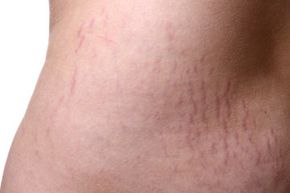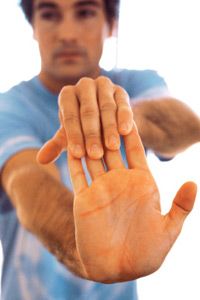Normally, when you pinch your skin and release, it doesn't stay pinched for very long -- and that's a good thing, or visits to grandma's house would be pretty hard on the cheeks. The elastic nature of your skin's middle layer, the dermis, allows it to return to its normal form after being pulled, pinched or squeezed.
However, when skin undergoes rapid or extreme stretching, it doesn't bounce back. It's because there's a threshold to the elasticity of the dermis, and when the elastic fibers in your skin snap, your skin's once-springy appearance suddenly looks sprung. When excessive skin-stretching occurs, it can result in the appearance of indentions, streaks or stripes, often pink or purple, on the skin. These are stretch marks, also known as striae.
Advertisement
When stretch marks first form, they start off with pretty intense coloration but fade over time. The somewhat mottled texture, though, won't fade away. Stretch marks frequently appear on the thighs, buttocks, arms (usually near the armpit), abdomen and breasts.
Before trying to get rid of stretch marks, the first step is determining what's causing your stretch marks to appear in the first place:
- Pregnancy
- Rapid weight gain or weight loss
- Prolonged use of corticosteroids
- Growth spurts, especially during adolescence
- Large increase in muscle mass, especially in arms and legs
- Genetic disorders, such as Marfan syndrome or Ehlers-Danlos
- Prolonged steroid use
Keep in mind that aside from causing self-consciousness, stretch marks are harmless and don't require medical or cosmetic attention. But if you're self-conscious or embarrassed by yours, can you get rid of them? Keep reading to find out.
Advertisement



